Lava spilling from Philippine volcano, ash coating land
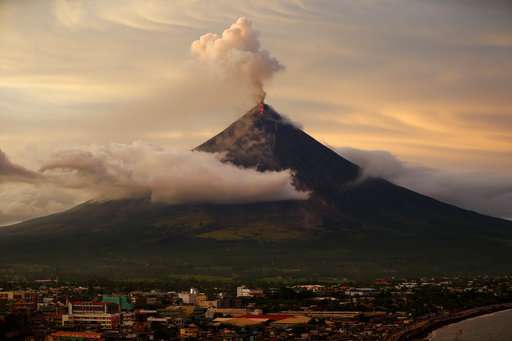
More lava was spilling from a Philippine volcano also sending up columns of ash over farmland and towns already coated in gray after a nearly two-week eruption.
More than 74,000 people are staying in dozens of emergency shelters after fleeing the danger zone around Mount Mayon. Officials are worried the eruption may last months, disrupting the lives and livelihoods of people in its shadow.
The Philippine Institute of Volcanology and Seismology said Friday lava eruptions have been intense but sporadic over the previous 24 hours. It measured ash plumes rising up to 5 kilometers (3 miles) high and detected 15 volcanic earthquakes as well as emissions of sulfur dioxide.
GPS and other measurements from instruments installed around the volcano also continue to indicate a swelling of the mountain surface, which is consistent with magma rising and creating pressure. The episodes of lava fountaining may be relieving that pressure, scientists said.
"It just means that the pressure is being relieved for the moment and then it builds up again," said Paul Alanis, research specialist at the volcano institute.
The alert level for Mayon remains four on a scale of five, indicating a violent eruption may be imminent.
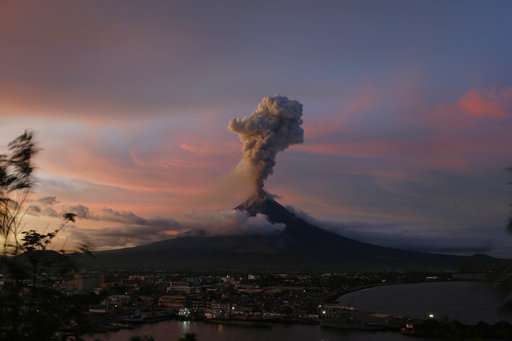
No injuries have been reported, but law enforcers have struggled to keep people out of the danger zone, 8 kilometers from the crater.
Officials have said temporary learning centers will be set up in the schools being used as evacuation centers and farm animals will be moved closer so education and income will not be lost.
Farmers have had to leave their rice, vegetable and poultry farms within the danger zone. The initial damage to agriculture alone during the past two weeks exceeds $2 million, Abay provincial agricultural officer, Cheryll Ribeta, told a news conference Thursday.
Mayon, in northeastern Albay province, has erupted about 50 times in the last 500 years. In 2013, an ash eruption killed five climbers who had ventured near the summit despite warnings.
The Philippines has about 22 active volcanoes. The explosion of Mount Pinatubo in 1991 was one of the biggest volcanic eruptions of the 20th century, killing hundreds.
-
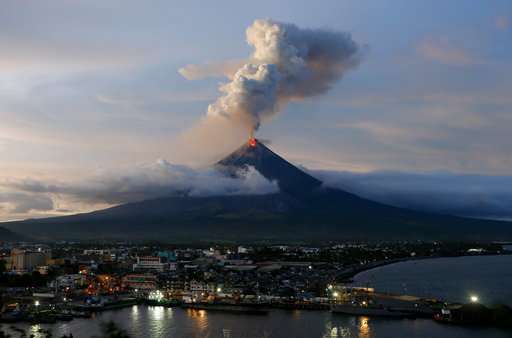
With Legazpi city in foreground, Mayon volcano erupts anew at dusk Thursday, Jan. 25, 2018 in Albay province around 200 miles (340 kilometers) southeast of Manila, Philippines. The Philippine Institute of Volcanology and Seismology said lava flows had advanced more than a kilometer (0.6 miles) and superheated gas and volcanic debris known as pyroclastic flows had reached 5 kilometers (3 miles) from the crater in one area. Mayon's lava fountaining has flowed up to 3 kilometers (1.86 miles) from the crater in a dazzling but increasingly dangerous eruption. (AP Photo/Bullit Marquez) -
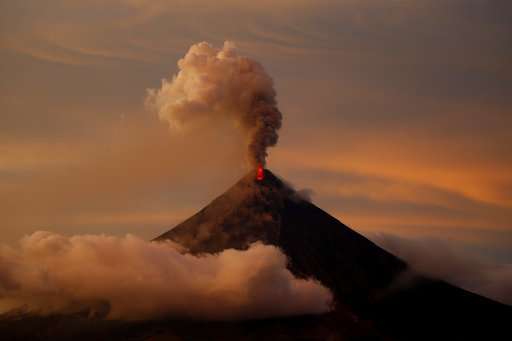
Mayon volcano erupts anew at sunset Thursday, Jan. 25, 2018 in Albay province around 200 miles (340 kilometers) southeast of Manila, Philippines. The Philippine Institute of Volcanology and Seismology said lava flows had advanced more than a kilometer (0.6 miles) and superheated gas and volcanic debris known as pyroclastic flows had reached 5 kilometers (3 miles) from the crater in one area. Mayon's lava fountaining has flowed up to 3 kilometers (1.86 miles) from the crater in a dazzling but increasingly dangerous eruption. (AP Photo/Bullit Marquez) -
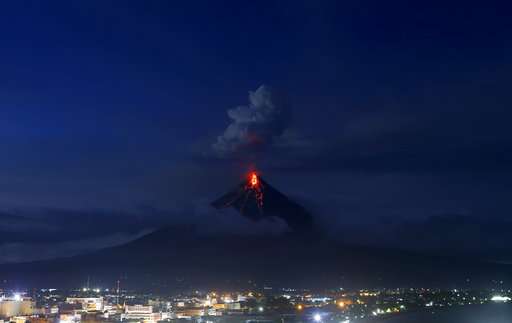
With Legazpi city in foreground, Mayon volcano erupts anew Thursday, Jan. 25, 2018 in Albay province around 200 miles (340 kilometers) southeast of Manila, Philippines. The Philippine Institute of Volcanology and Seismology said lava flows had advanced more than a kilometer (0.6 miles) and superheated gas and volcanic debris known as pyroclastic flows had reached 5 kilometers (3 miles) from the crater in one area. Mayon's lava fountaining has flowed up to 3 kilometers (1.86 miles) from the crater in a dazzling but increasingly dangerous eruption. (AP Photo/Bullit Marquez) -
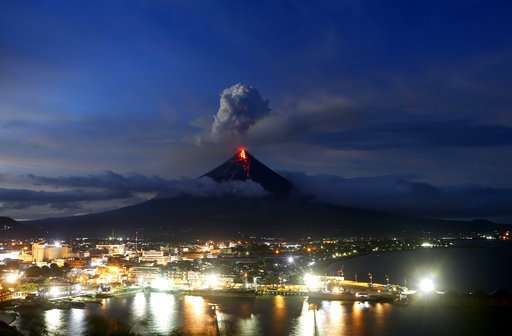
The Mayon volcano continues to erupt as the sun sets behind Legazpi city, Thursday, Jan. 25, 2018, in Albay province, roughly 340 kilometers, (200 miles) southeast of Manila, Philippines. (AP Photo/Bullit Marquez) -
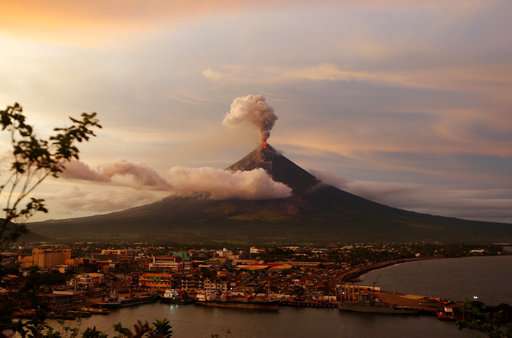
The Mayon volcano continues to erupt as the sun sets behind Legazpi city, Thursday, Jan. 25, 2018 in Albay province, roughly 340 kilometers, (200 miles) southeast of Manila, Philippines. (AP Photo/Bullit Marquez) -
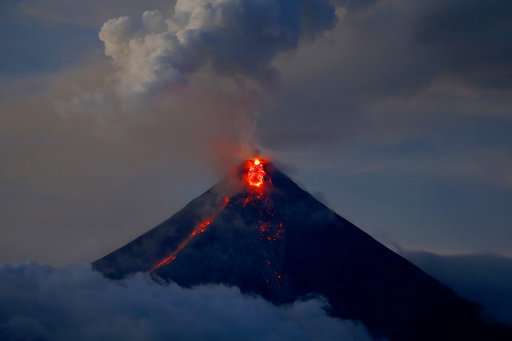
The Mayon volcano continues to erupt Thursday, Jan. 25, 2018, in Albay province roughly 340 kilometers (200 miles) southeast of Manila, Philippines. (AP Photo/Bullit Marquez)
© 2018 The Associated Press. All rights reserved.




















